|
|
Advertisement:
|
|
AMD Athlon 64 FX-51 |
|
Join the community - in the OCAU Forums!
|
Socket940 Cooling, Test Setup
Cooling:
A CoolerMaster heatsink and fan were provided in the system but the actual retail CPUs will be in the boxed package we're used to seeing from AMD and a higher-rated cooler is included. The socket940 cooler mounting system is interesting if you haven't seen it before, so I thought we'd take a quick look at it in detail.
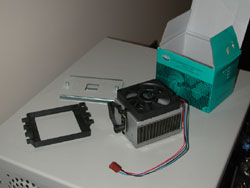
It's interesting just how similar to the P4 in terms of physical packaging the Athlon 64 FX is. Not only does it have a large heatspreader on top of the CPU, but it also uses a rectangular plastic base around the socket for the CPU cooler to clamp onto. This base requires the motherboard to be reinforced by a metal plate on the back. When purchased separately the CoolerMaster comes with the bracket and backplate, but the Asus motherboard like some others comes with them preinstalled.
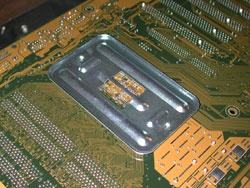
Similarly to the P4 system, the cooler is at first positioned loosely and then levered firmly down onto the CPU. Once in place, the lever is secured with a locking arm.
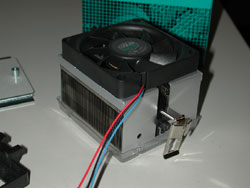 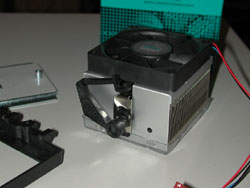
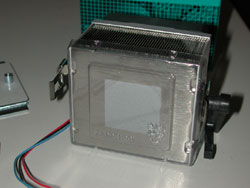 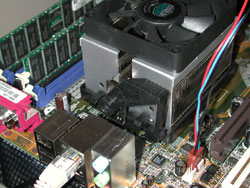
BIOS
The motherboard BIOS in the Athlon64 FX test PC (v1003-Beta1) did have a degree of overclocking features available. One such feature is the ability to choose memory speed. Unfortunately it seemed to be ignoring my request to select 400mhz, staying at 166 (333 DDR) in the BIOS, and oddly displayed (I assume misreported) in CPU-Z under Windows XP Pro as 157MHz.
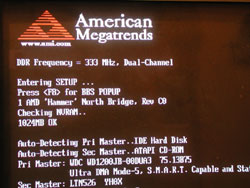
CPU FSB adjustment is available from 200MHz to 300MHz and the core voltage can be set to 1.55v (default), 1.65v or 1.75v for this CPU. There are various settings related to the ECC feature of the memory, but I could see no performance impact from enabling or disabling them. Turning on any of the "ECC scrubbing" features made the system very unstable.
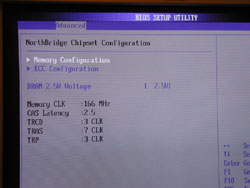 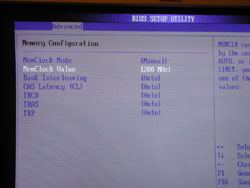
Here's what CPU-Z reported about the Athlon 64 FX and SK8N test PC:
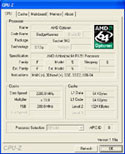 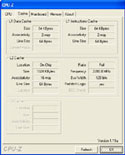 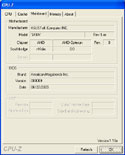 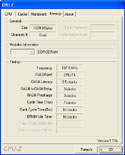
Comparison Systems:
For comparison we have Intel's P4 3.2GHz with HT, running on ABIT's IC7-G i875P motherboard. Unfortunately due to the testing schedule and limited time with each testbed the memory settings of our P4 rig were quite different to what we discovered on the Athlon 64 FX machine. We had tested the P4 at 400MHz CAS3 using the provided memory, but when examining the FX testbed we discovered the memory was ECC registered PC2700 which would only work at 333MHz CAS2.5 as described above. So, bear in mind in the following benchmarks that the P4 was tested with an advantage of higher memory speed and synchronous memory to FSB speed. Whether the CAS difference cancels out the clockspeed difference isn't something we can be sure of without access to the testbeds again.
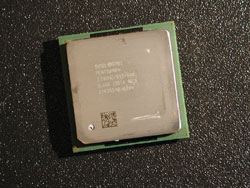 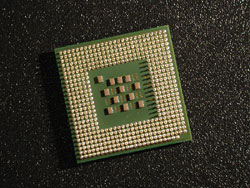
Also for comparison we have an AthlonXP running at 2.2GHz on ABIT's NF7-S v2.0 nForce2 motherboard. Note that this is not a true 3200+ CPU with the Barton 512KB L2 core. Our testbed is an AthlonXP 1800+ overclocked to 2.2GHz from its default 1.533GHz. This is a Thoroughbred-B CPU with 256KB of L2 cache. However, in our previous AthlonXP 3200+ review we found that the Barton's L2 cache size increase did not have a noticeable effect (see here) on many of the benchmarks we're using in this review. We have the same 400MHz (DDR) FSB and 2.2GHz core speed as the AthlonXP 3200+ and the Athlon 64 FX-51. The memory settings for this machine were set the same as for the Athlon64 FX testbed, as the AthlonXP was tested after we had examined the Athlon 65 FX PC.
Common across all testbeds was the video card, Gigacube's Radeon 9800 Pro 128MB, a WD1200JB hard drive and the software configuration, being Windows XP Pro with SP1. 1GB of memory in 2x 512MB sticks was used in all systems, in the recommended slots for Dual Channel support. Catalyst Drivers XP 3.7 were used for the Radeon card, with Windows XP Unified Driver 2.45 for the two nForce motherboards and Intel Chipset Drivers 5.0.2.1003 for the IC7-G.
|
|
Advertisement:
All original content copyright James Rolfe.
All rights reserved. No reproduction allowed without written permission.
Interested in advertising on OCAU? Contact us for info.
|

|


